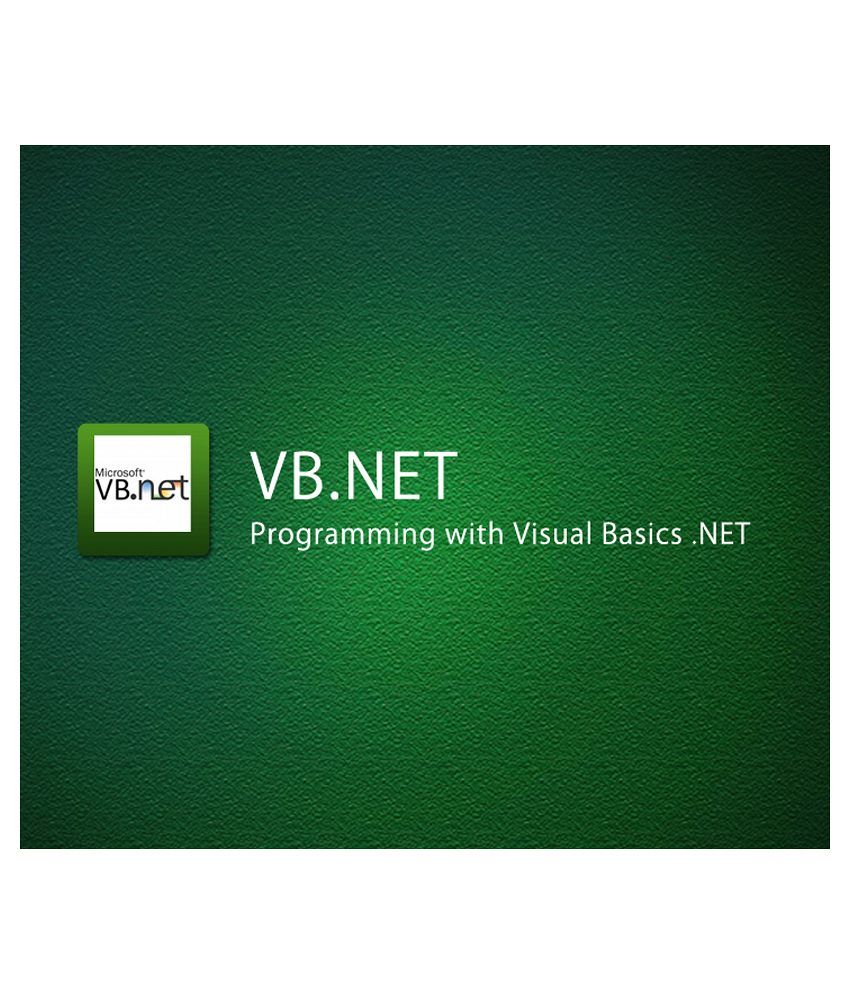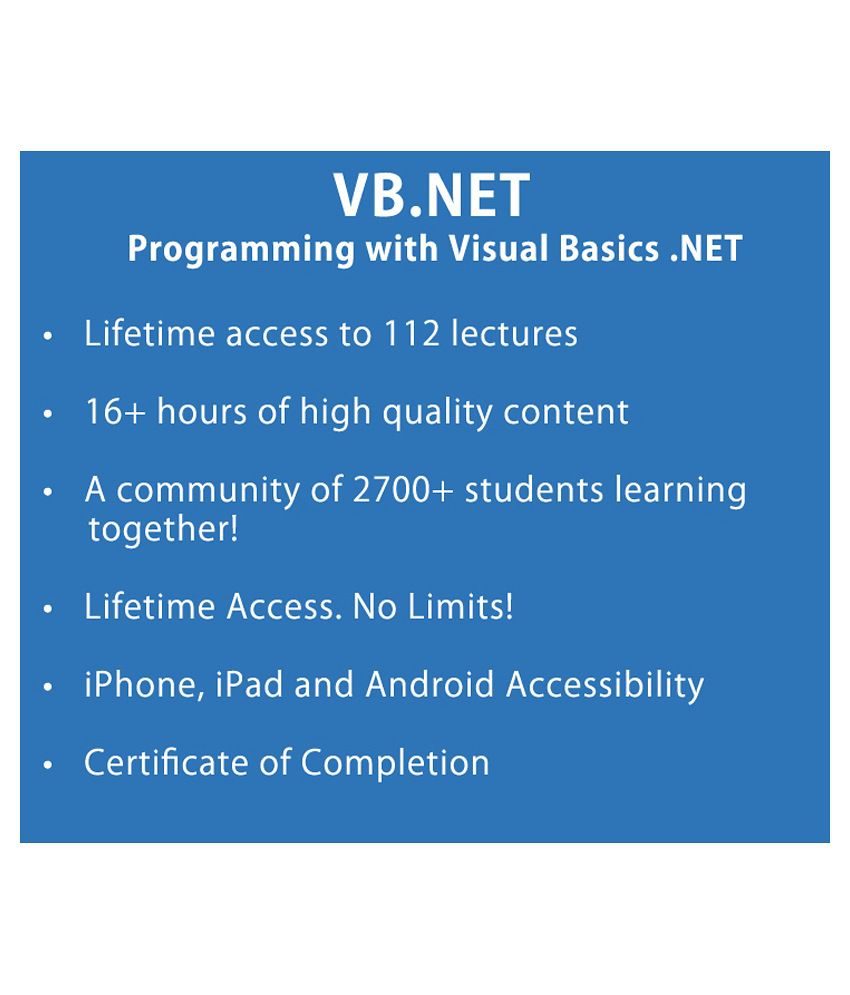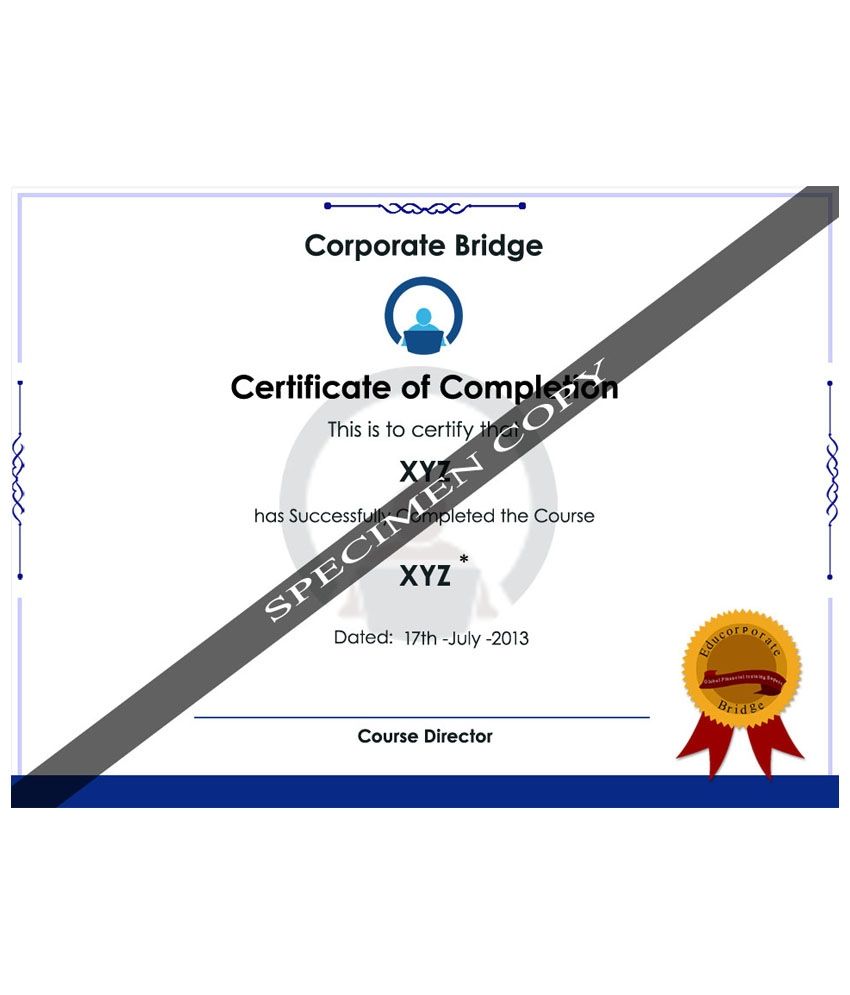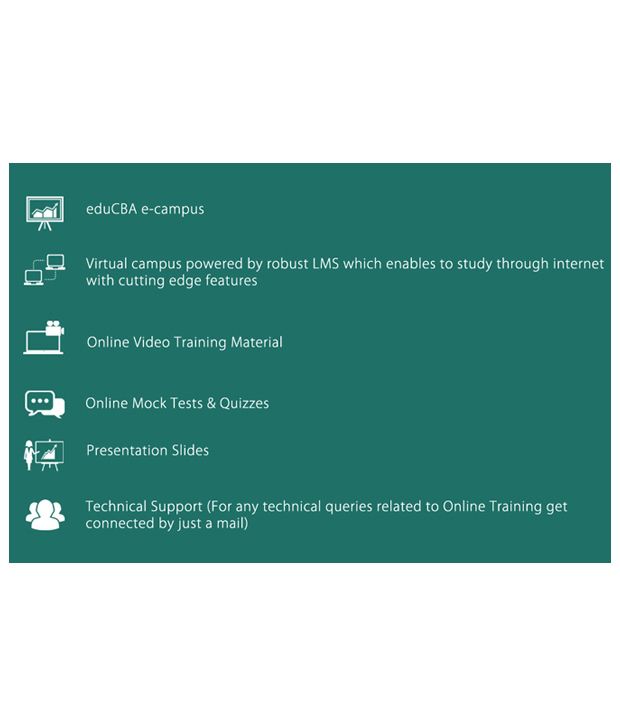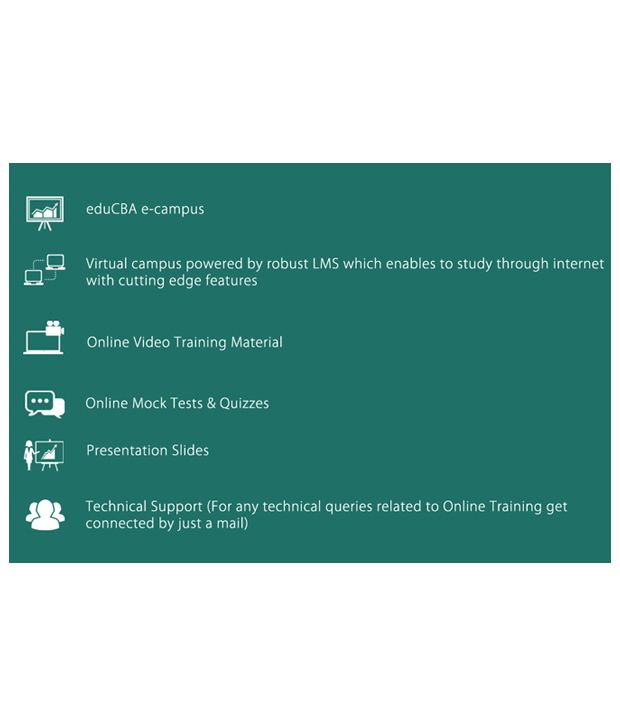![]()
|
Syste m (Hardware/Software) Requirements |
|
Operating Software |
Windows XP or Higher |
|
Processor |
Minim um P4 or Higher |
|
RAM |
1 GB or Higher |
|
Browser |
Any |
|
Recommended Internet Speed |
Minimum 1MBPS |
|
Supported Browser Plug-ins |
* Updated Flash Player, * Update Java |
|
Other Requirements |
Speaker or headphone |
Prdocut Description
In this course on VB.NET, you will learn how to do programming using Visual Basics. The course starts from scratch and hence a beginner can also take and enjoy this course.
The course starts with Introduction to VB.NET where we will get acquainted to Basic Language features , Data types, Variables and constants in VB.NET. We will also learn Basic structure of a VB.NET console based program, Operators and Expressions in VB.NET etc. Then we will proceed to understand Programming constructs in VB.NET, Procedures, Functions, Exception Handling, Arrays, Enumerations and Structure, Object Oriented Programming with VB.NET where we will be introduced to Objects and classes, Constructors and Destructors etc.
Course Curriculum
Section1:Introduction
-
Lecture1:Introduction
Section2:VB.NET Concepts
-
Lecture2:Expressions in VB.NET
Section3:Practical Examples in VB.NET
-
Lecture3:Practical Examples of some basic Programming in VB.NET
-
Lecture4:Practical Examples of some basic Programming in VB.NET Continue
-
Lecture5:Programming on Greatest Integer, Binary, Constants
-
Lecture6:Program to Calculate HRA, DA, Medical, Allowance, Salary
-
Lecture7:Program to Check Age and Eligibility to Vote
Section4:Programming Constructs in VB.NET
-
Lecture8:Decision Constructs
-
Lecture9:Short Circuited if Statement
-
Lecture10:Practical Examples Part 1
-
Lecture11:Practical Examples Part 2
-
Lecture12:Looping Constructs
-
Lecture13:While…End While Loop
-
Lecture14:Practical Examples 3
-
Lecture15:Additional Examples Part 1
-
Lecture16:Additional Examples Part 2
Section5:Procedures, Functions and Exception Handling
-
Lecture17:Procedures and Functions Part 1
-
Lecture18:Procedures and Functions Part 2
-
Lecture19:Procedures and Functions Part 3
-
Lecture20:Procedures and Functions Part 4
-
Lecture21:Procedures and Functions Part 5
-
Lecture22:Procedures and Functions Part 6
-
Lecture23:Procedures and Functions Part 7
-
Lecture24:Procedures and Functions Part 8
-
Lecture25:Procedures and Functions Part 9
-
Lecture26:Procedures and Functions Part 10
Section6:Arrays Enumerations and Structures
-
Lecture27:Arrays Enumerations and Structures Part 1
-
Lecture28:Arrays Enumerations and Structures Part 2
-
Lecture29:Arrays Enumerations and Structures Part 3
-
Lecture30:Arrays Enumerations and Structures Part 4
-
Lecture31:Arrays Enumerations and Structures Part 5
-
Lecture32:Arrays Enumerations and Structures Part 6
-
Lecture33:Arrays Enumerations and Structures Part 7
-
Lecture34:Arrays Enumerations and Structures Part 8
-
Lecture35:Arrays Enumerations and Structures Part 9
-
Lecture36:Arrays Enumerations and Structures Part 10
-
Lecture37:Object Oriented Programming
-
Lecture38:Properties and Methods
-
Lecture39:Constructors and Destructors
Section7:Examples
-
Lecture40:Examples Part 1
-
Lecture41:Examples Part 2
-
Lecture42:Examples Part 3
-
Lecture43:Examples Part 4
Section8:Overloading, Inheritance and Overriding
-
Lecture44:Inheritance and Overriding Part 1
-
Lecture45:Inheritance and Overriding Part 2
-
Lecture46:Inheritance and Overriding Part 3
-
Lecture47:Inheritance and Overriding Part 4
-
Lecture48:Inheritance and Overriding Part 5
-
Lecture49:Inheritance and Overriding Part 6
-
Lecture50:Inheritance and Overriding Part 7
-
Lecture51:Inheritance and Overriding Part 8
-
Lecture52:Inheritance and Overriding Part 9
-
Lecture53:Inheritance and Overriding Part 10
-
Lecture54:Additional Examples Part 1
-
Lecture55:Additional Examples Part 2
-
Lecture56:Additional Examples Part 3
Section9:Interfaces, Namespaces and Collections
-
Lecture57:Introduction, Interfaces, Namespaces
-
Lecture58:Strongly typed collections
-
Lecture59:Examples 1
-
Lecture60:Examples 2
-
Lecture61:Example 3
-
Lecture62:Additional Examples Part 1
-
Lecture63:Additional Examples Part 2
-
Lecture64:Additional Examples Part 3
-
Lecture65:Additional Examples Part 4
Section10:Events and Delegates
-
Lecture66:Introduction to Events and Delegates
-
Lecture67:Events and Delegates
-
Lecture68:Inheriting events
-
Lecture69:Examples Events and Delegates Part 1
-
Lecture70:Examples Events and Delegates Part 2
-
Lecture71:Additional Examples Part 1
-
Lecture72:Additional Examples Part 2
-
Lecture73:Additional Examples Part 3
-
Lecture74:Additional Examples Part 4
Section11:Multithreading and Garbage Collection
-
Lecture75:Multithreading in VB.NET Part 1
-
Lecture76:Multithreading in VB.NET Part 2
-
Lecture77:Garbage Collector Part 1
-
Lecture78:Garbage Collector Part 2
-
Lecture79:Examples Part 1
-
Lecture80:Examples Part 2
-
Lecture81:Examples Part 3
-
Lecture82:Examples Part 4
-
Lecture83:Additional Examples Part 1
-
Lecture84:Additional Examples Part 2
-
Lecture85:Additional Examples Part 3
-
Lecture86:Additional Examples Part 4
-
Lecture87:Additional Examples Part 5
-
Lecture88:Additional Examples Part 6
-
Lecture89:Additional Examples Part 7
Section12:Working with Databases using VB.NET
-
Lecture90:Working with ADO.NET Part 1
-
Lecture91:Working with ADO.NET Part 2
-
Lecture92:Datasets
Section13:Working with Databases using VB.NET
-
Lecture93:Examples Part 1
-
Lecture94:Examples Part 2
-
Lecture95:Examples Part 3
-
Lecture96:Additional Examples Part 1
-
Lecture97:Additional Examples Part 2
-
Lecture98:Additional Examples Part 3
Section14:Components and Assemblies
-
Lecture99:Lifecycle of a Component Part 1
-
Lecture100:Lifecycle of a Component Part 2
-
Lecture101:Private and Shared Assemblies Part 1
-
Lecture102:Private and Shared Assemblies Part 2
-
Lecture103:Examples
Section15:More on Assemblies
-
Lecture104:Globalization and Localization Part 1
-
Lecture105:Globalization and Localization Part 2
-
Lecture106:Creating Custom Attributes Part 1
-
Lecture107:Creating Custom Attributes Part 2
-
Lecture108:Examples Part 1
-
Lecture109:Examples Part 2
-
Lecture110:Examples Part 3
-
Lecture111:Examples Part 4
-
Lecture112:Additional Examples
Benefits
-
eduCBA e-campus
-
Virtual campus powered by robust LMS which enables to study through internet with cutting edge features
-
Online Video Training Material
Presentation Slides
-
ail)
USP of the product
-
* 24 x 7 online access
-
* Learn from tutorials curated by expert industry professionals and trainers
-
* Certificate of Completion
-
* Practical application oriented skills
How to use? (Steps to use Study Material)
-
Step 1 - eduCBA sends the redemption coupon along with the registration link.
-
Step 2 - Student will register with his register email id and coupon Step 3 - Student receive the course access and password on his/her email id
-
Step 4 - Login using your email id and password and start learning
To get more information, you may want to watch the video below
Learn Everything, Anywhere, Anytime
India's Largest Online Education Marketplace
